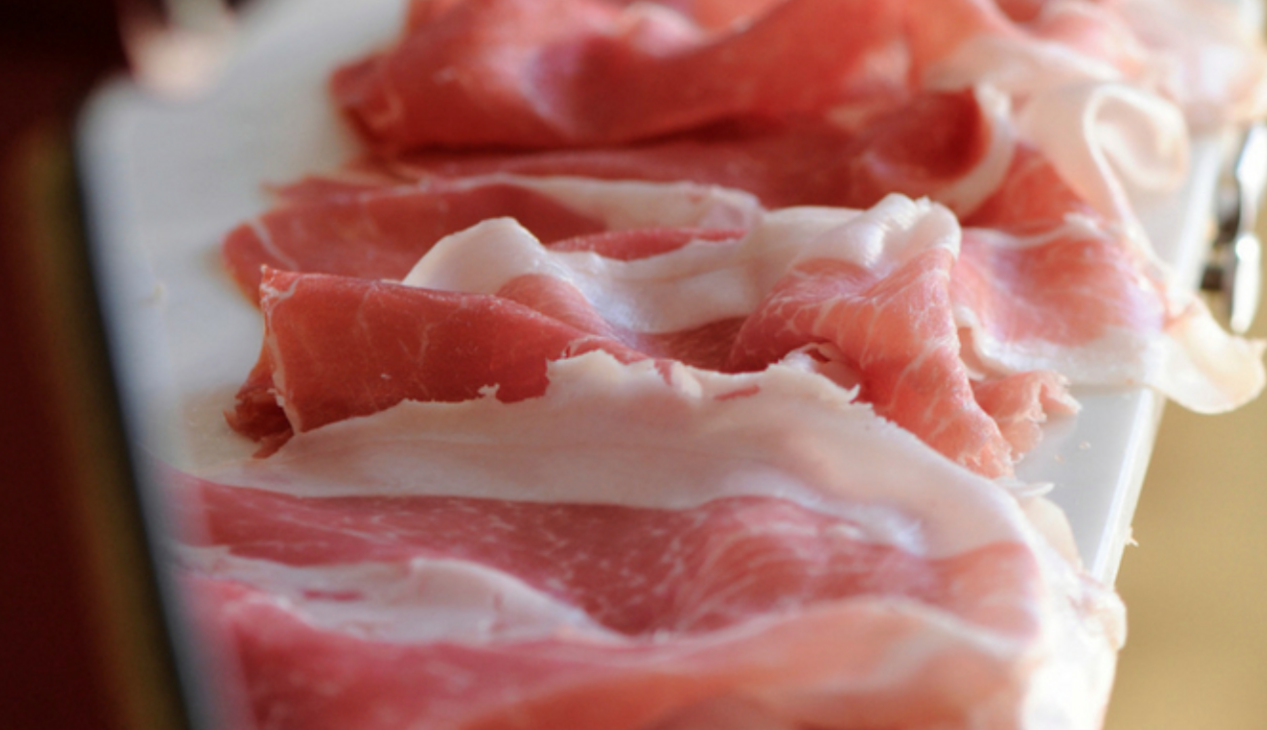Discover the Story of Prosciutto di Modena
Prosciutto simply translates to “ham" in Italian. Its origins date as far back to the pre-Roman times when villagers began to dry-age pork legs to extend their meat supply during the long winters. Over the centuries, the tradition of making prosciutto was perfected.
Today, the art is celebrated throughout Italy and the world. Techniques vary based on the region, producer, and consortium (refresh your Italian certification expertise here). Typically the meat is cut to size, seasoned by hand (often according to a secret family recipe), and left to dry-age at a controlled temperature for up to several years.
The result? A flavorful, delicately sweet and salty product that is typically served uncooked, or “crudo,” on its own or paired with unsalted bread. At Eataly, our chefs love to serve prosciutto with juicy pears and melons, or a creamy cheese, like mozzarella.
WHY PROSCIUTTO DI MODENA DOP?
Thanks to regional biodiversity and culinary customs, all prosciutto does not taste the same. Modena, a province located in the northern region of Emilia-Romagna, is known for its ancient and deep-rooted gastronomic traditions, particularly when it comes to making prosciutto! The warm, humid summers and colder winters provide this area with an ideal climate for the production of their famous Prosciutto di Modena DOP.
Typically pear-shaped with a deep red color when sliced, Prosciutto di Modena DOP is made without the use of additives or preservatives. It is flavorful without being too salty, and has a sweet and pleasant flavor that is perfect to pair with stronger cheeses such as Provolone Valpadana DOP. It can also be enjoyed in pasta dishes, such as the filling for tortellini or served with grilled eggplant and yellow melon.
To be considered Prosciutto di Modena DOP, which stands for Denominazione d’Origine Protetta (protected designation of origin), every step in the production is regulated. The entire process, from salting to curing, must take place in the hills and valleys around the basin of the Panaro river, including the provinces of Bologna and Reggio Emilia.




































i-Italy
Facebook
Google+
This work may not be reproduced, in whole or in part, without prior written permission.
Questo lavoro non può essere riprodotto, in tutto o in parte, senza permesso scritto.